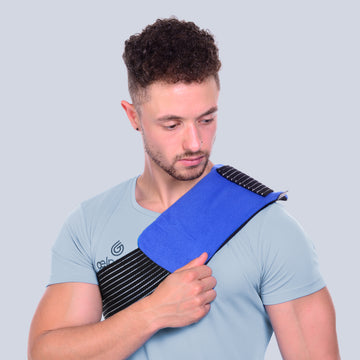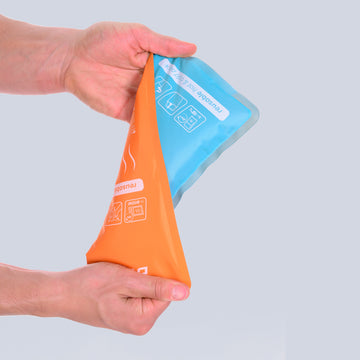Posted by Tia Patel | Apr-26-2021

Running with Asthma
Asthma is a common lung condition that causes occasional breathing difficulties. It affects people of all ages and often starts in childhood and whilst there is currently no cure, there are simple treatments that can help keep symptoms of asthma under control.
The British Lung Foundation found that over 8 million people (over 12% of the population) have been diagnosed with asthma.
Running can even ease your asthma symptoms by strengthening your lungs and reducing inflammation. This can make it easier to enjoy exercise and daily activities.
Keep reading for the benefits of running with asthma, how to breathe when running with asthma and our top tips.
Benefits of running with asthma
-
Improve your lung function - Poor lung function is a sign of asthma. A 2018 study found that running could improve lung function in people with asthma. Even better, it can also slow down the decline of lung function, which normally happens with age.
-
Increase your oxygen uptake - Physical activity, like running, improves the oxygen capacity of your lungs. This can make breathing in general much easier, according to a 2013 study.
-
Decrease airway inflammation - According to a 2015 study, aerobic exercise can help reduce inflammation in the airways. This could ease the symptoms of asthma, which are caused by airway inflammation.
How to breathe when running with asthma
To improve breathing whilst running try these breathing exercises which work by opening your airways and normalizing your breathing. These can be done before or after a run to manage your symptoms.
Pursed lip breathing - If you’re short of breath, pursed lip breathing can help oxygen enter your lungs and slows down your breath.
- Sit in a chair with your back straight and relax your neck and shoulders. Pucker your lips, like you’re about to whistle.
- Inhale through your nose for two counts.
- Exhale through your mouth for four counts, lips pursed.
- Repeat until your breathing slows down.
Diaphragmatic breathing (or belly breathing) - expands the airways and chest allowing oxygen into your lungs and making it easier to breathe.
- Sit in a chair or lie in bed. Relax your neck and shoulders. Put one hand on your chest and the other on your belly.
- Inhale slowly through your nose. Your belly should move outward against your hand. Your chest should stay still.
- Exhale slowly through puckered lips, two times longer than your inhale. Your belly should move inward, and your chest should stay still.
Buteyko breathing - a method that’s used to slow down breathing. By teaching you to breathe through your nose instead of your mouth, enabling you to soothe your airways.
- Sit up straight. Take several small breaths, 3 to 5 seconds each.
- Breathe out through your nose.
- Pinch your nostrils shut with your thumb and index finger.
- Hold your breath for 3 to 5 seconds.
- Breathe normally for 10 seconds.
- Repeat until your symptoms subside.
- Use your rescue inhaler if your symptoms are severe or if they don’t go away after 10 minutes.
Tips for running with asthma
1. Talk to your doctor - Before starting a running routine, consult your doctor. They can provide safety tips and precautions based on the severity of your asthma as well as arranging more regular checkups as you develop a running routine.
2. Have an asthma action plan - Work with your doctor to create an asthma action plan. This will include creating preventive measures to control your symptoms such as using a daily inhaler to soothe airways and decrease the chances of a flare up. It’s important to ask your doctor what to do if you’re running without an inhaler and have an asthma attack, in this case they will discuss breathing exercises and signs for asking for emergency help.
3. Pay attention to your body - It's important to stay in tune with your body and recognise and differentiate between the signs of running and symptoms of an asthma attack which often include coughing, shortness of breath and a tight chest.
4. Carry your rescue inhaler - This will help you prevent an asthma attack if you experience symptoms while running.
5. Check the weather - Look at the weather forecast before running outside. Avoid running in extremely cold or hot weather, which can induce asthma symptoms. The severity of pollen in the air, dependent on the weather, can cause hay fever which weakens nasal flow by up to 80 per cent, affecting your breathing, cardiovascular performance and trigger an attack.
Check out our tips for getting relief from hayfever
6. Warm up and cool down - This should be 10 minutes before running and 10 minutes after to warm up the body and prepare your lungs.
7. Run with a partner - if you do run by yourself make sure to let someone know of the route you will be taking.
8. Treat any niggles with ice to avoid running injury
Before starting a running routine, make sure your asthma is well controlled. Your doctor can help you manage your asthma before you hit the pavement.
#TeamGPD
















